

Jim Thorpe

Jacobus Franciscus "Jim" Thorpe (Sac and Fox (Sauk) from Oklahoma: Wa-Tho-Huk) (May 28, 1888 – March 28, 1953) was an American athlete. Considered one of the most versatile athletes in modern sports, he won Olympic gold medals in the pentathlon and decathlon, played American football collegiately and professionally, and also played professional baseball and basketball. He subsequently lost his Olympic titles when it was found he was paid for playing two seasons of minor league baseball before competing in the games (thus violating the amateur status rules).

Jim Thorpe
Thorpe was of mixed Native American and white ancestry. He was raised as a Sac and Fox, and named Wa-Tho-Huk, roughly translated as "Bright Path". He struggled with racism throughout much of his life and his accomplishments were publicized with headlines describing him as a "Redskin" and "Indian athlete". He also played on several All-American Indian teams throughout his career and barnstormed as a professional basketball player with a team composed entirely of Native Americans.
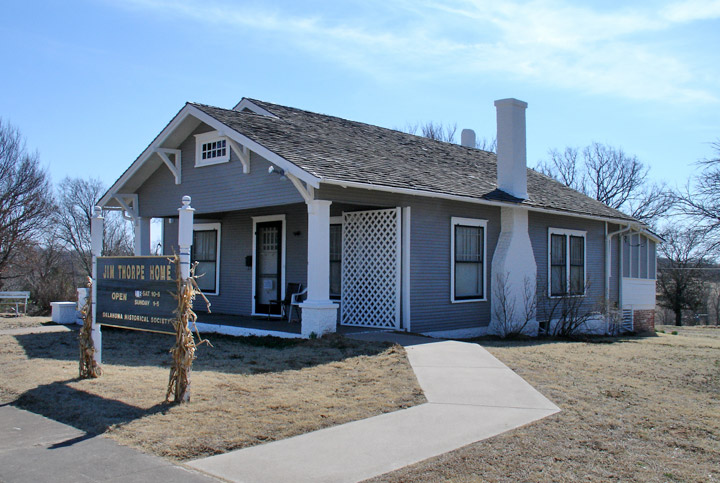
Jim Thorpe Home in Yale, Oklahoma
Thorpe was named the greatest athlete of the first half of the twentieth century
by the Associated Press (AP) in 1950, and ranked third on the AP list of
athletes of the century in 1999. After his professional sports career ended,
Thorpe lived in abject poverty. He worked several odd jobs, struggled with
alcoholism, and lived out the last years of his life in failing health. In 1983,
thirty years after his death, his medals were restored.
Information about Thorpe's birth, full name, and ethnic background varies
widely. What is known is that he was born in Indian Territory, but no birth
certificate has been found. Thorpe's birth is generally considered to have taken
place on May 28, 1888 near the town of Prague, Oklahoma. Jacobus Franciscus
Thorpe is the name on his christening (baptismal) certificate.
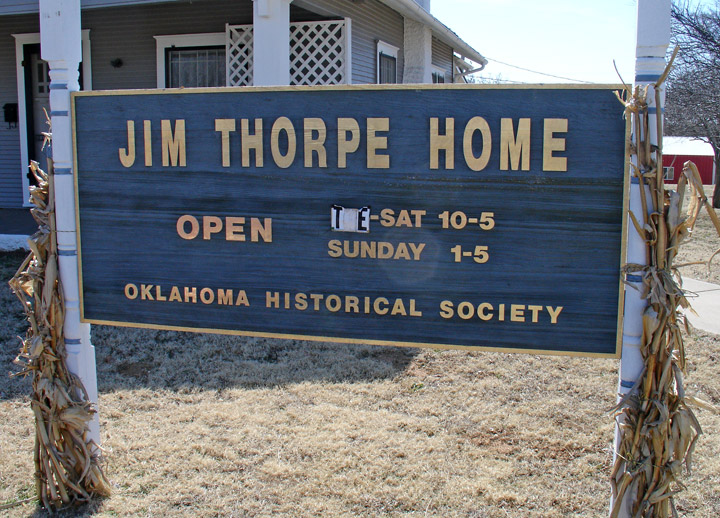
His parents were of mixed descent. His father, Hiram Thorpe, had an Irish father
and a Sac and Fox Indian mother, while his mother, Charlotte Vieux, had a French
father and a Native American mother. Thorpe was raised as a Sac and Fox, and his
native name was Wa-Tho-Huk, translated as "A path lighted by a great flash of
lightning" or more simply "Bright Path". As was the custom for Sac and Fox,
Thorpe was named for something occurring around the time of his birth, in this
case the sunlight brightening the path to the cabin where he was born. Thorpe's
mother was Catholic and raised the children in the faith, which Thorpe later
observed throughout his adult life.
Together with his twin brother, Charlie, Thorpe went to school in Stroud,
Oklahoma at the Sac and Fox Indian Agency School. Charlie died of pneumonia when
they were nine years old. Charlie had helped Jim through school. Thorpe did not
handle his brother's death very well and ran away from school on several
occasions. Hiram Thorpe then sent him to what is now known as Haskell Indian
Nations University in Lawrence, Kansas, so that he would not run away again.
When his mother died of childbirth complications two years later, Thorpe fell
into a depression. After several arguments with his father, he ran away from
home to work on a horse ranch.
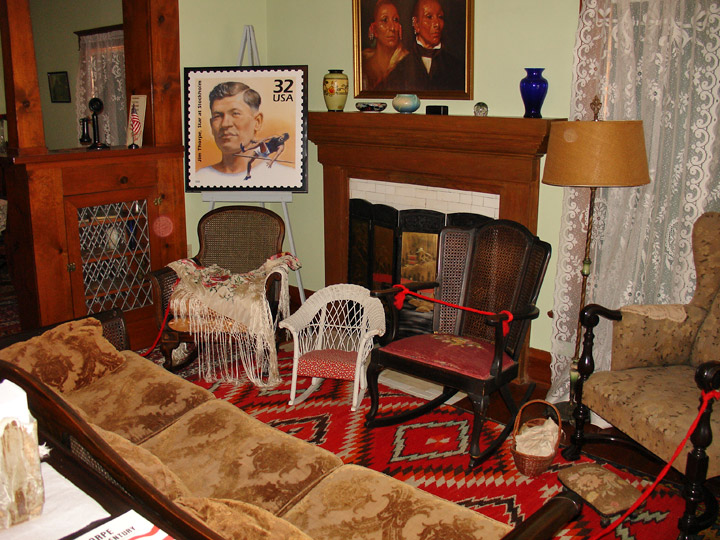
home living room
In 1904, Thorpe returned to his father and decided to join Carlisle Indian
Industrial School in Carlisle, Pennsylvania, where he was coached by Glenn
Scobey "Pop" Warner, one of the most influential coaches in early American
football history. Later that year, Hiram Thorpe died from gangrene poisoning
after a hunting accident. Thorpe once again dropped out of school. He resumed
farm work for a few years and then returned to Carlisle, where his athletic
career commenced.
Thorpe reportedly began his athletic career at Carlisle in 1907 when he walked
past the track and beat the school's high jumpers with an impromptu 5-ft 9-in
jump while still wearing plain clothes. His earliest recorded track and
field results are indeed from 1907. But track and field were certainly not the
only events in which Thorpe engaged at Carlisle—he also participated in
football, baseball, lacrosse and even ballroom dancing. Reportedly, Pop Warner
was hesitant to allow Thorpe, his star track and field athlete, to compete in a
physical game such as football. Thorpe however, convinced Warner to let him run
some plays against the school's defense; Warner assumed he would be tackled
easily and give up the idea of playing football. Thorpe "ran around past and
through them not once, but twice." He then walked over to Warner and said "[n]obody
is going to tackle Jim," while flipping him the ball.
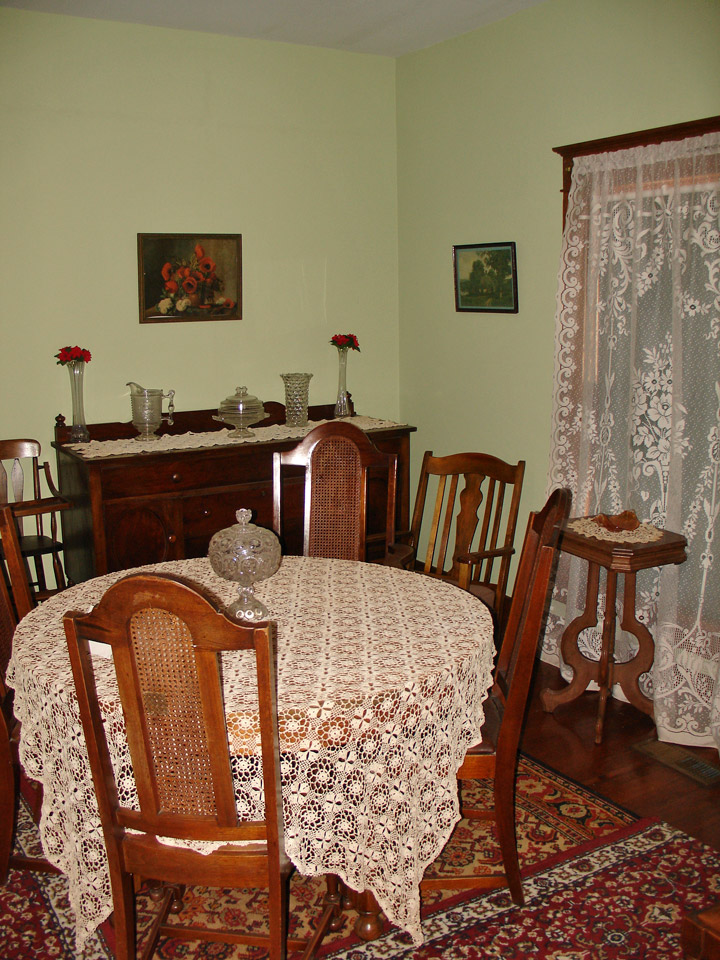
dining room
He gained nationwide attention for the first time in 1911. As a running back,
defensive back, placekicker, and punter for his school's football team, Thorpe
scored all of his team's points—four field goals and a touchdown—in an 18-15
upset of Harvard. His team finished the season 11–1.
The following year, he led Carlisle to the national collegiate championship,
scoring 25 touchdowns and 198 points. Carlisle's 1912 record included a 27-6
victory over Army. In that game, Thorpe scored a 92-yard touchdown that was
nullified by a penalty incurred by a teammate; Thorpe then scored a 97-yard
touchdown on the next play.

kitchen cabinet
During that game, future President Dwight Eisenhower injured his knee while
trying to tackle Thorpe. Eisenhower recalled of Thorpe in a 1961 speech, "Here
and there, there are some people who are supremely endowed. My memory goes back
to Jim Thorpe. He never practiced in his life, and he could do anything better
than any other football player I ever saw." Thorpe was given All-American honors
in both 1911 and 1912.
Football was—-and would remain—-Thorpe's favorite sport, and he competed only
sporadically in track and field. Nevertheless, track and field would become the
sport in which Thorpe would gain the most fame.
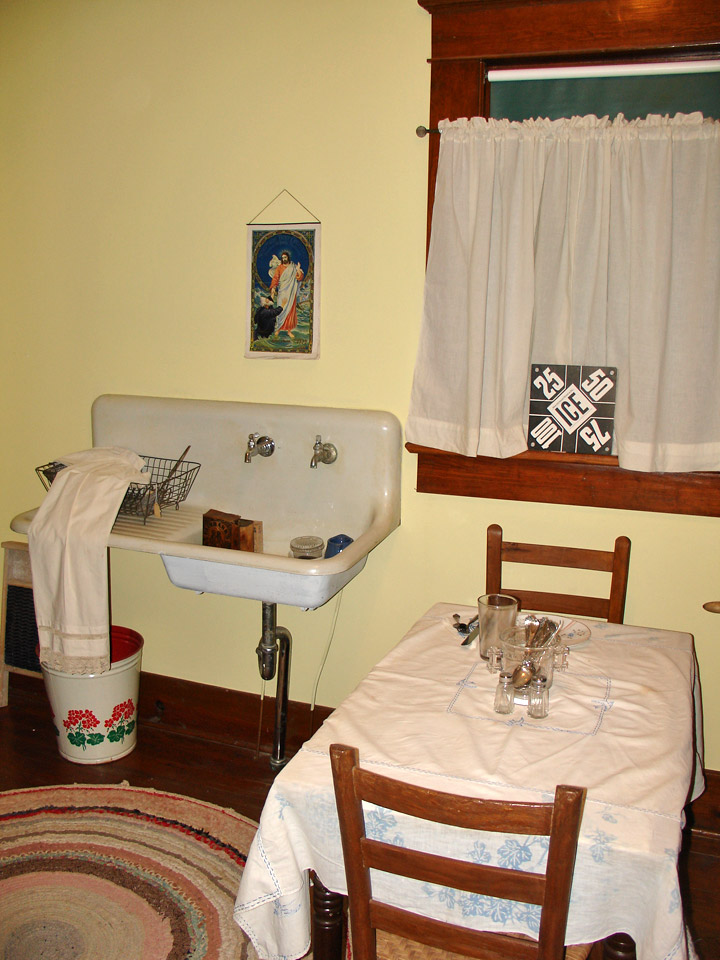
For the 1912 Summer Olympics in Stockholm, Sweden, two new multi-event
disciplines were on the program, the pentathlon and the decathlon. A pentathlon
based on the ancient Greek event had been organized at the 1906 Summer Olympics,
but the 1912 edition would consist of the long jump, the javelin throw,
200-meter dash, the discus throw and the 1500-meter run.
The decathlon was an entirely new event in athletics, although it had been
competed in American track meets since the 1880s and a version had been featured
on the program of the 1904 St. Louis Olympics. However, the events of the new
decathlon were slightly different from the U.S. version. Both events seemed a
fit for Thorpe, who was so versatile that he alone had formed Carlisle's team in
several track meets. He could run the 100-yard dash in 10 seconds flat, the 220
in 21.8 seconds, the 440 in 51.8 seconds, the 880 in 1:57, the mile in 4:35, the
120-yard high hurdles in 15 seconds, and the 220-yard low hurdles in 24 seconds.
He could long jump 23 ft 6 in and high-jump 6 ft 5 in.[3] He could pole vault 11
feet, put the shot 47 ft 9 in, throw the javelin 163 feet, and throw the discus
136 feet. Thorpe entered the U.S. Olympic trials for both the pentathlon and the
decathlon.
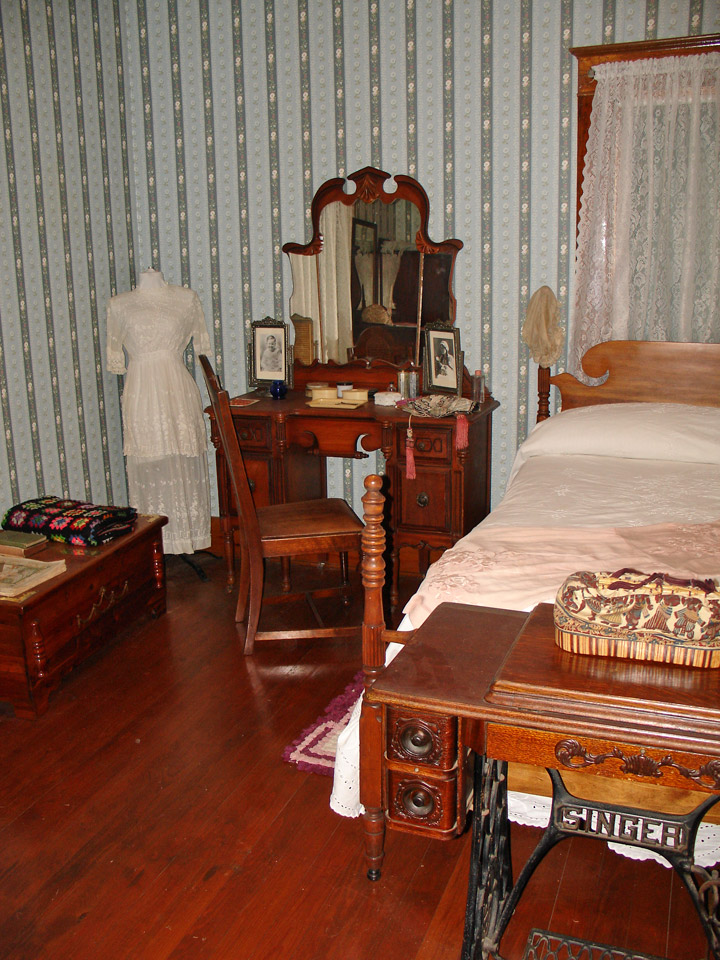
bedroomom
He easily won the awards, winning three events, and was named to the pentathlon
team, which also included future International Olympic Committee (IOC) president
Avery Brundage. There were only a few candidates for the decathlon team, and the
trials were cancelled. Thorpe would contest his first—-and, as it turned out,
only-—decathlon in the Olympics. Thorpe's Olympic record 8,413 points would
stand for nearly two decades.
Thorpe's competition schedule for the Olympics was crowded. Along with the
decathlon and pentathlon, he also entered the long-jump and high-jump
competitions. The first event scheduled was the pentathlon. Thorpe was the class
of the field, winning four events. He placed only third in the javelin, an event
he had not competed in before 1912. Although the competition was primarily
decided on place points, points were also calculated for the marks achieved in
the events.

The same day he won the pentathlon gold, Thorpe qualified for the high-jump
final. In that final, he placed fourth and took seventh place in the long jump.
Thorpe's final event was the decathlon, where tough competition from local
favorite Hugo Wieslander was expected. Thorpe, however, also easily defeated
Wieslander, finishing nearly 700 points ahead of him. He placed in the top four
of all ten events. Overall, Thorpe won eight of the two competitions' 15
individual events.
As was the custom of the day, the medals were presented to the athletes during
the closing ceremonies of the games. Along with the two gold medals, Thorpe also
received two challenge prizes, which were donated by King Gustav V of Sweden for
the decathlon and Czar Nicholas II of Russia for the pentathlon. Legend has it
that, when awarding Thorpe his prize, King Gustav said, "You, sir, are the
greatest athlete in the world," to which Thorpe replied, "Thanks, King."
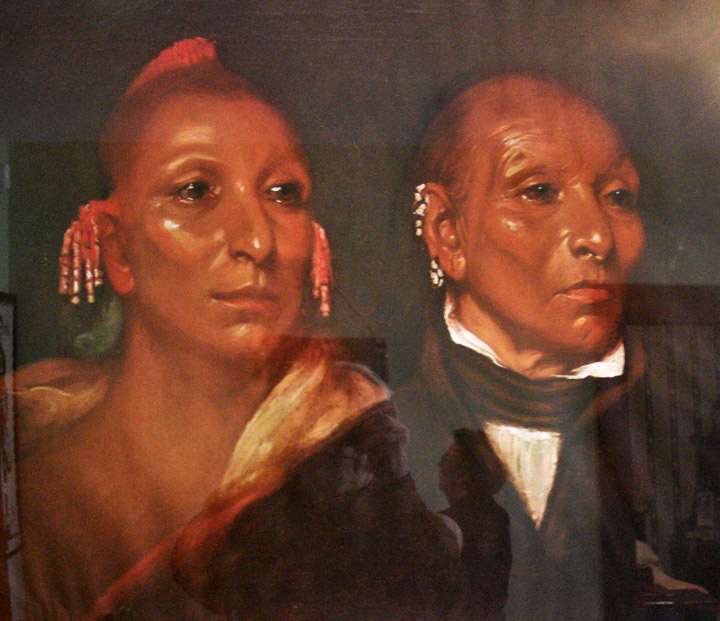
Chief Black Hawk
and his son Whirling Thunder. It was painted in 1833.
The original oil painting hangs in the
this copy in the Jim Thorpe house
Thorpe's successes had not gone unnoticed at home, and he was honored with a
ticker-tape parade on Broadway. He later remembered: "I heard people yelling my
name, and I couldn't realize how one fellow could have so many friends."
Apart from his track and field appearance, Thorpe also played in one of two
exhibition baseball matches held at the 1912 Olympics, which featured two teams
made up of U.S. track and field athletes. It was not Thorpe's first try at
baseball, as would soon become known to the rest of the world.
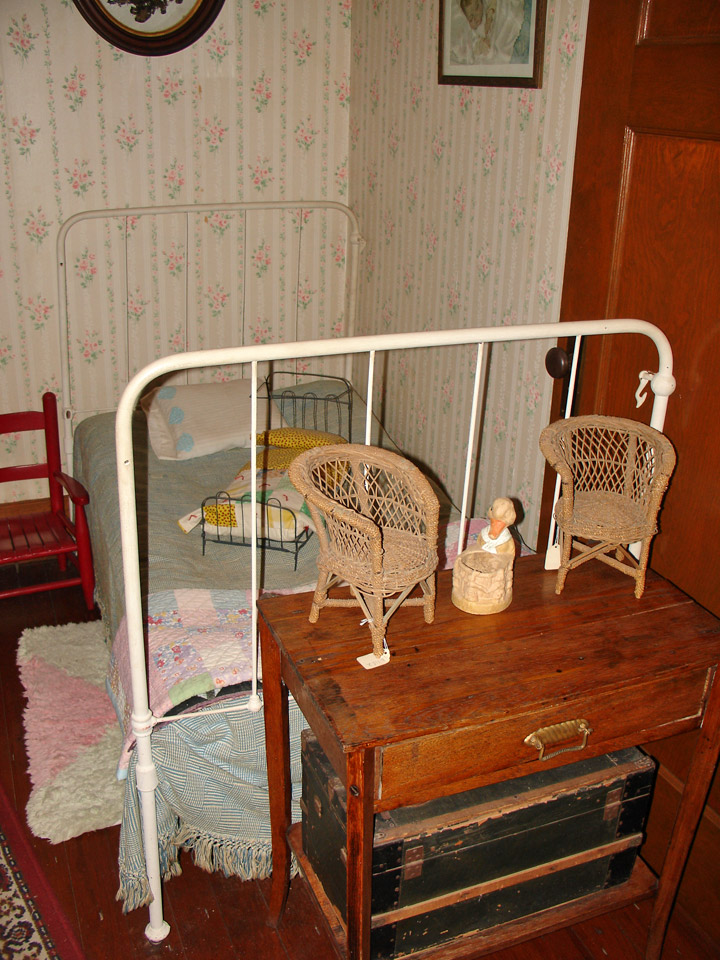
In 1913, strict rules regarding amateurism were in force for athletes
participating in the Olympics. Athletes who received money prizes for
competitions, who were sports teachers, or who had previously competed against
professionals, were not considered amateurs and were not allowed to compete in
the Olympics.
In late January 1913, U.S. newspapers published stories announcing that Thorpe
had played professional baseball. It is not entirely certain which newspaper
first published the story; the earliest article found is from the Providence
Times, but the Worcester Telegram is usually mentioned as the first. Thorpe had
indeed played professional baseball in the Eastern Carolina League for Rocky
Mount, North Carolina, in 1909 and 1910, receiving meager pay; reportedly as
little as $2 a game and as much as $35 a week. College players, in fact,
regularly spent summers playing professionally, but most, as opposed to Thorpe,
used aliases.
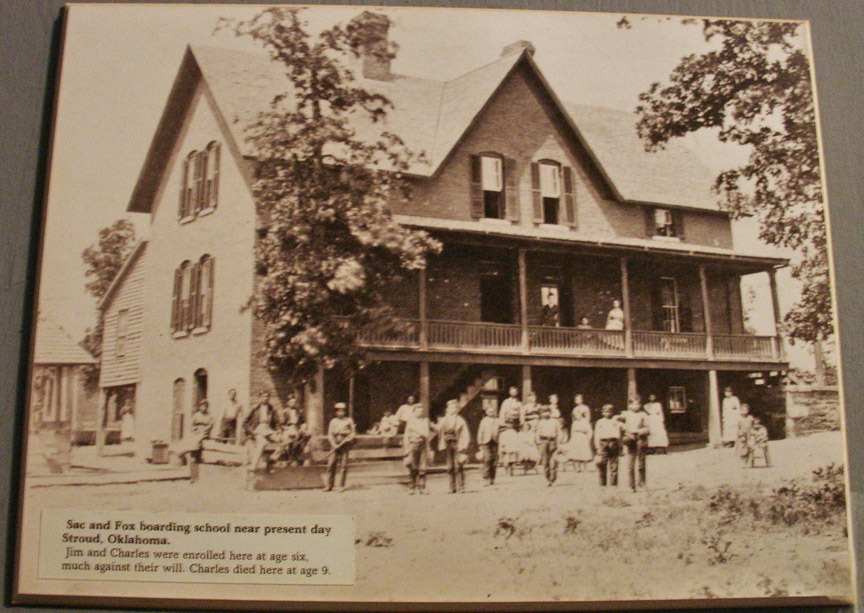
Indian Boarding School which Jim and his brother attended
Although the public did not seem to care much about Thorpe's past, the Amateur
Athletic Union (AAU), and especially its secretary James E. Sullivan, took the
case very seriously. Thorpe wrote a letter to Sullivan, in which he admitted
playing professional baseball:“ ...I hope I will be partly excused by the fact
that I was simply an Indian schoolboy and did not know all about such things. In
fact, I did not know that I was doing wrong, because I was doing what I knew
several other college men had done, except that they did not use their own
names.... ”
His letter did not help. The AAU decided to retroactively withdraw Thorpe's
amateur status and asked the IOC to do the same. Later that year, the IOC
unanimously decided to strip Thorpe of his Olympic titles, medals and awards and
declared him a professional.
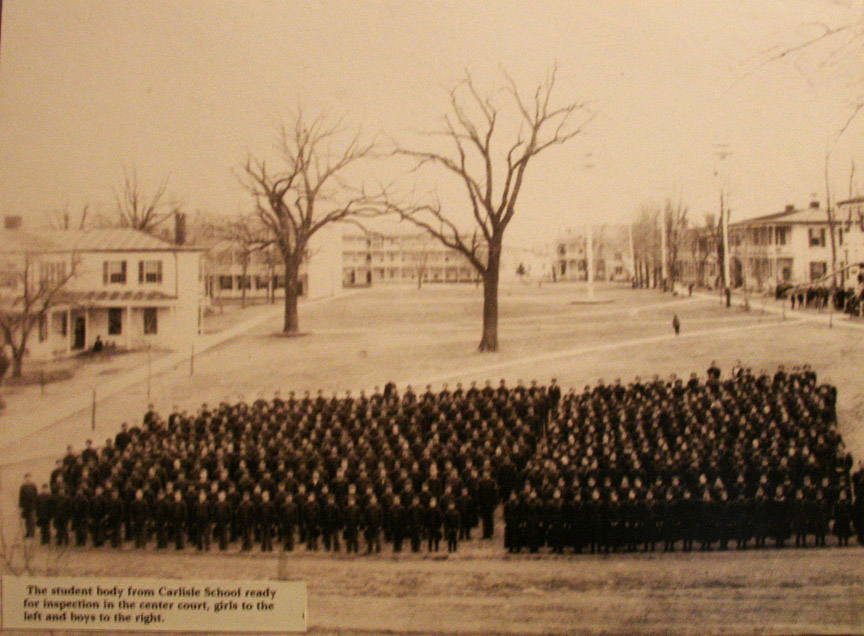
Carlisle Indian School which Jim attended
While Thorpe had played for money, his disqualification was not within the rules
in place at the time. In the rulebook for the 1912 Olympics, it was stated that
any protests had to be made within 30 days from the closing ceremonies of the
games. The first newspaper reports didn't appear until January 1913, about six
months after the Stockholm Games had concluded. However, AAU and IOC officials
were apparently ignorant of this rule or chose to ignore it. There also is some
evidence that Thorpe's amateur status had already been questioned long before
the Olympics but that this had been (deliberately) ignored by the AAU until they
were confronted with it in 1913.
The only positive side to this affair for Thorpe was that, as soon as the news
got out that he had been declared a professional, offers came in from
professional clubs.
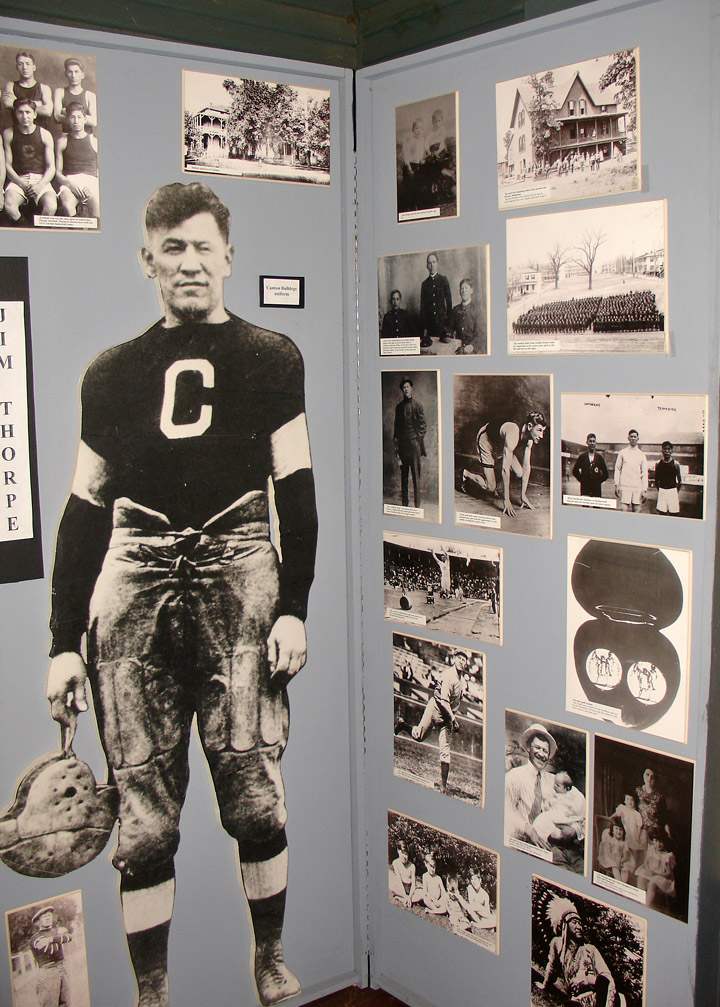
memories of his life
Declared a rare free agent in the era of the reserve clause, Jim Thorpe had his pick of teams for which to play. He turned down a starting position with the Saint Louis Browns to be a reserve with the New York Giants. One of the immediate benefits of joining the team came that October, when the Giants joined the Chicago White Sox for a world tour. Barnstorming across the United States and then around the world, Thorpe was the unquestioned star of the world tour. Everywhere the teams went, Thorpe brought them publicity and increased the tour's box office receipts. Among the highlights were meetings with the Pope and the last khedive of Egypt and playing before 20,000 in London with King George V in attendance. While in Rome, Thorpe was filmed wrestling with another baseball player on the floor of the Coliseum. Unfortunately, every inch of the film has been lost to time.
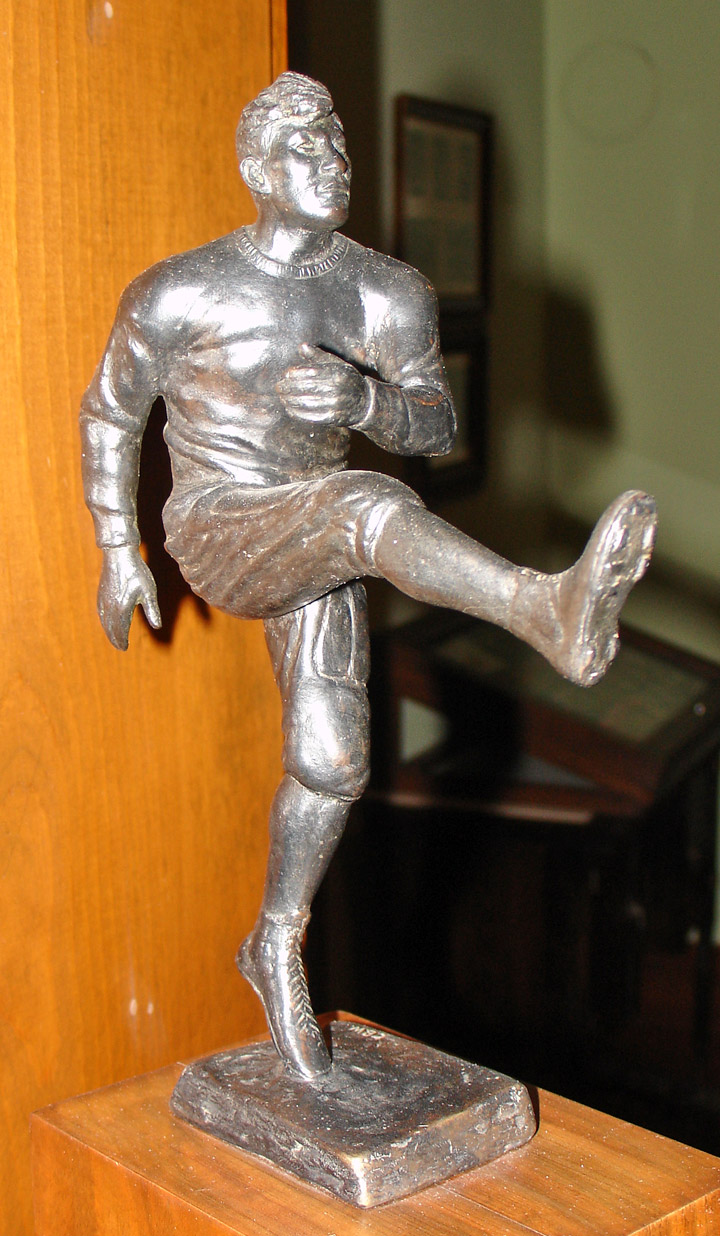
as a placekicker
Thorpe signed with the New York Giants baseball club in 1913 and played
sporadically with them as an outfielder for three seasons. After playing in the
minors with the Milwaukee Brewers in 1916, he returned to the Giants in 1917 but
was sold to the Cincinnati Reds early in the season. In the "double no-hitter"
between Fred Toney of the Reds and Hippo Vaughn of the Chicago Cubs, Thorpe
drove in the winning run in the 10th inning. Late in the season, he was sold
back to the Giants. Again, he played sporadically for the Giants in 1918 and was
traded to the Boston Braves on May 21, 1919, for Pat Ragan. In his career, he
amassed 91 runs scored, 82 runs batted in and a .252 batting average over 289
games. He continued to play baseball with teams in the minor leagues until 1922.
But Thorpe had not abandoned football either. Back in 1915, Thorpe had signed
with the Canton Bulldogs. They paid him $250 a game, a tremendous wage at the
time. Before Thorpe's signing, Canton was averaging 1,200 fans a game; 8,000
showed up for his debut against Massillon. The team won titles in 1916, 1917,
and 1919. Thorpe reportedly ended the 1919 championship game by kicking a
wind-assisted 95–yard punt from his team's own 5-yard line, effectively putting
the game out of reach. In 1920, the Bulldogs were one of 14 teams to form the
American Professional Football Association (APFA), which would become the
National Football League (NFL) two years later. Thorpe was nominally the APFA's
first president; however, he spent most of the year playing for Canton and a
year later was replaced by Joseph Carr. He continued to play for Canton,
coaching the team as well. Between 1921 and 1923, Thorpe played for the LaRue,
Ohio, (Marion County, Ohio) Oorang Indians, an all-Native American team.
Although the team went 3–6 in 1922, and 1–10 in 1923, Thorpe played well and was
selected to the Green Bay Press-Gazette's first All-NFL team in 1923 (the
Press-Gazette's team would later be formalized by the NFL as the league's
official All-NFL team in 1931).
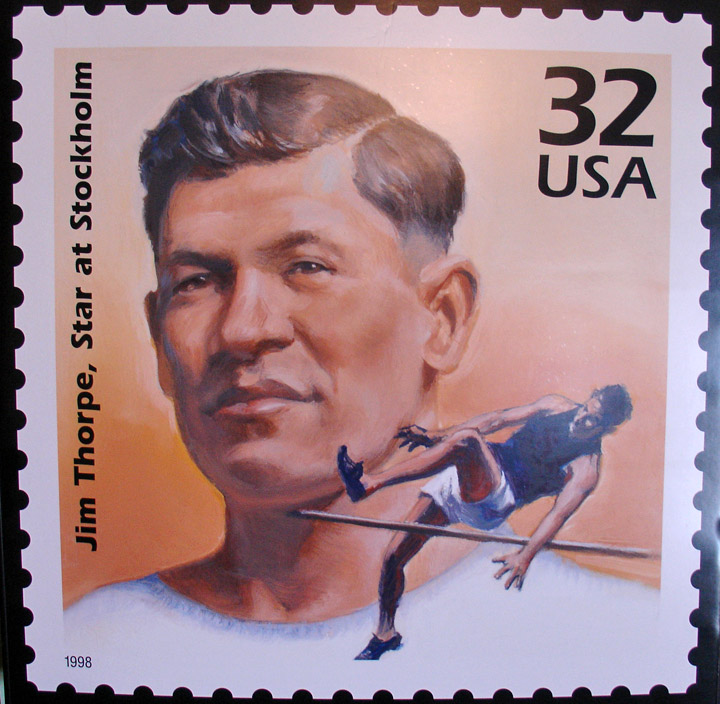
honored on a Postage Stamp in 1998
Thorpe never played on an NFL championship team. He retired from pro football at
the age of 41, having played 52 NFL games for six teams from 1920 to 1928.
Thorpe continued to be active in sports. By 1926 he was the primary draw for the
"World Famous Indians" in LaRue, which sponsored traveling football, baseball,
and basketball teams. A ticket discovered in an old book recently brought to
light his career in basketball. "Jim Thorpe and His World-Famous Indians"
barnstormed for at least two years (1927–28) in parts of New York, Pennsylvania,
and Marion, Ohio. Although pictures of Thorpe in his WFI basketball uniform were
printed on postcards and published in newspapers, this period of his life was
not well documented, and until 2005 most of Thorpe's biographers were unaware of
his basketball career.
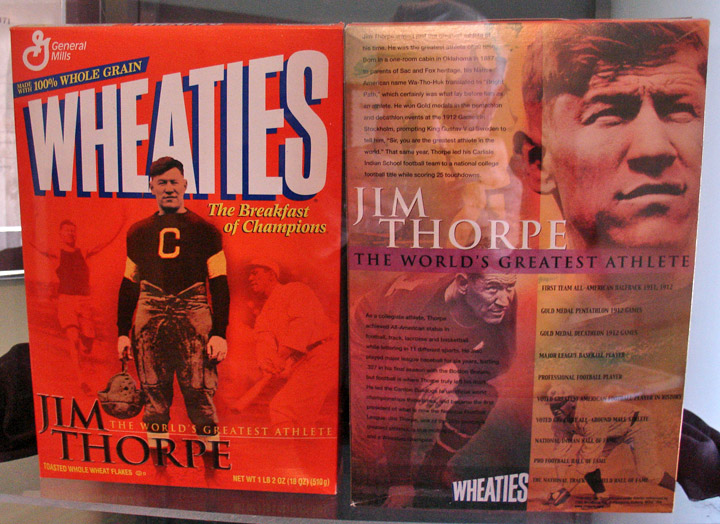
and on a Wheaties box
In 1913, Thorpe married Iva Miller, whom he had met at Carlisle. They had four
children: Jim Jr. (who died at age 2), Gale, Charlotte and Grace. Thorpe was a
chronic alcoholic in his later years. Miller filed for divorce from Thorpe in
1925, claiming desertion.
In 1926, Thorpe married Freeda V. Kirkpatrick, who was born September 19, 1905,
and died March 2, 2007, in Yakima, Washington. She was working for the manager
of the baseball team on which he was playing at the time. They had four sons:
Carl, William, Richard and John. William, Richard and John "Jack" survived their
mother, who had divorced their father in 1941 after 15 years of marriage. After
the end of his athletic career, Thorpe struggled to support his family. He found
it difficult to work outside sports and never kept a job for an extended period
of time. During the Great Depression in particular, Thorpe held various jobs,
among others as an extra in several movies, usually playing an Indian chief in
Westerns. But he also worked as a construction worker, a bouncer, a security
guard, and a ditch digger, and he briefly joined the United States Merchant
Marine in 1945.
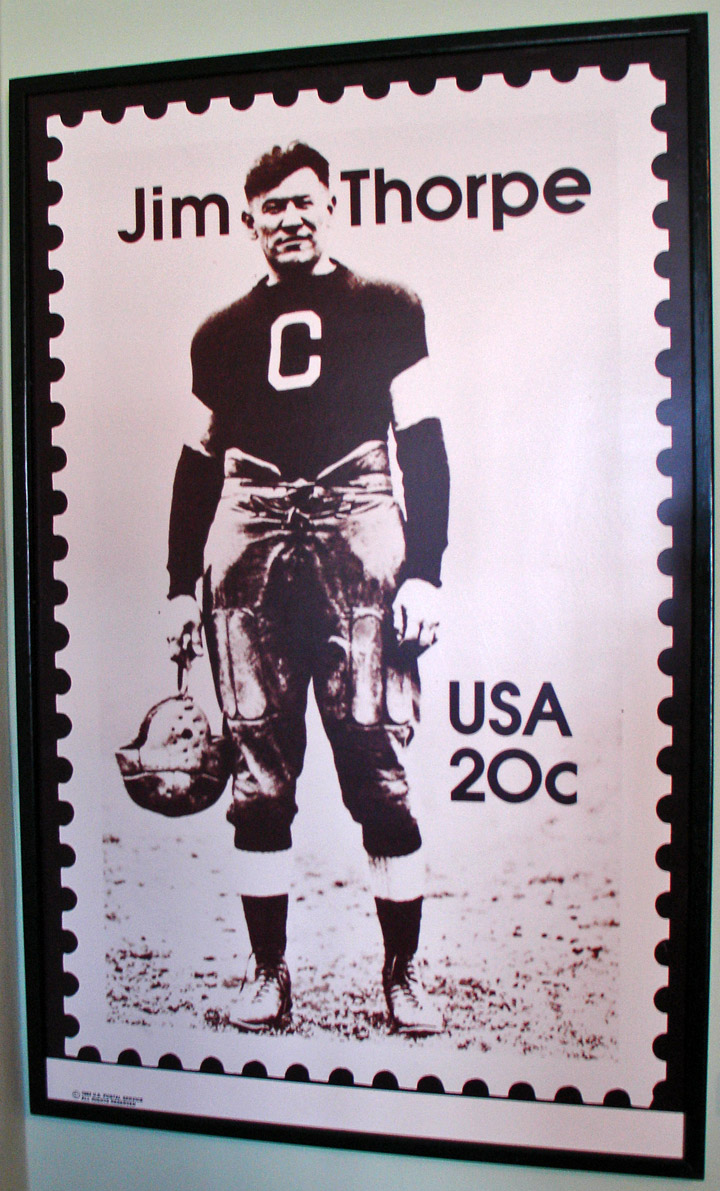
on an earlier stamp, when postage was 20 cents
By the 1950s, Thorpe had no money left, and when he was hospitalized for lip cancer in 1950, he was admitted as a charity case. At a press conference announcing the procedure, Thorpe's wife wept and pleaded for help, saying: "[W]e're broke.... Jim has nothing but his name and his memories. He has spent money on his own people and has given it away. He has often been exploited." In early 1953, Thorpe suffered his third heart attack while eating dinner with his third wife, Patricia Askew, in his trailer home in Lomita, California. Artificial respiration briefly revived him, and he was able to speak to those around him but lost consciousness shortly afterward and died on March 28.
Text from Wikipedia
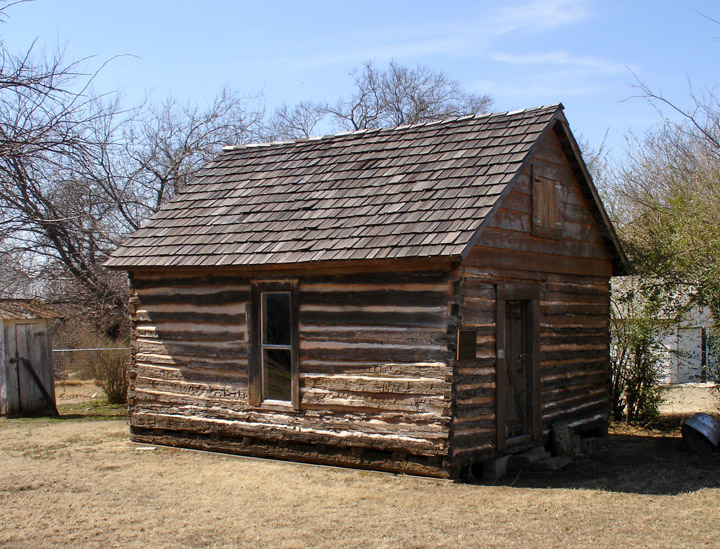
early pioneer cabin
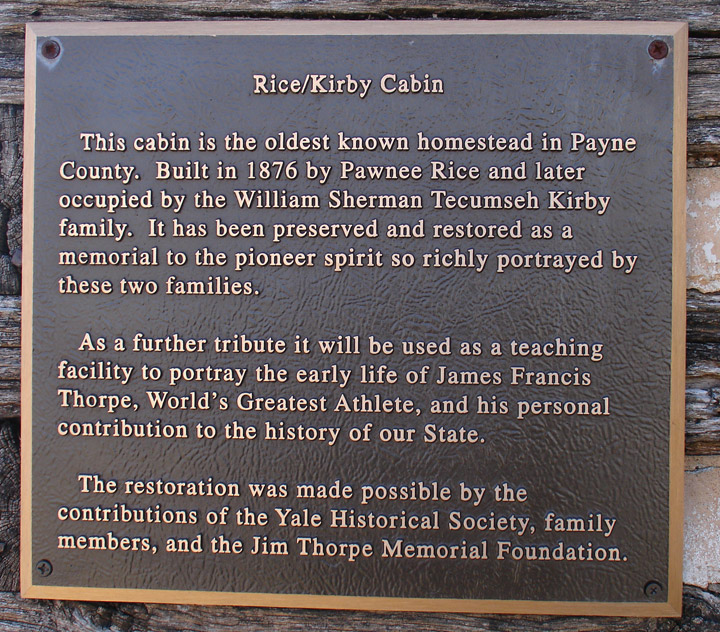
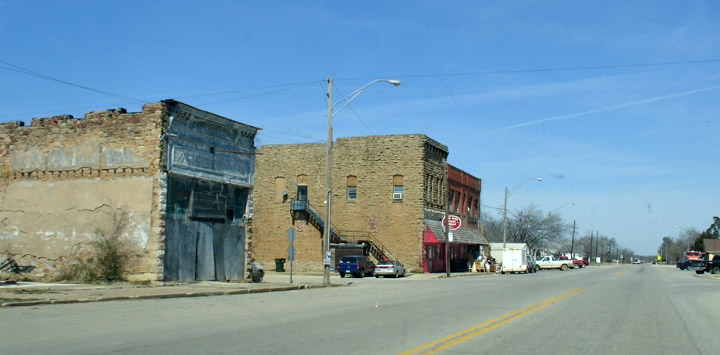
street in Yale, Oklahoma

Oklahoma bungalow
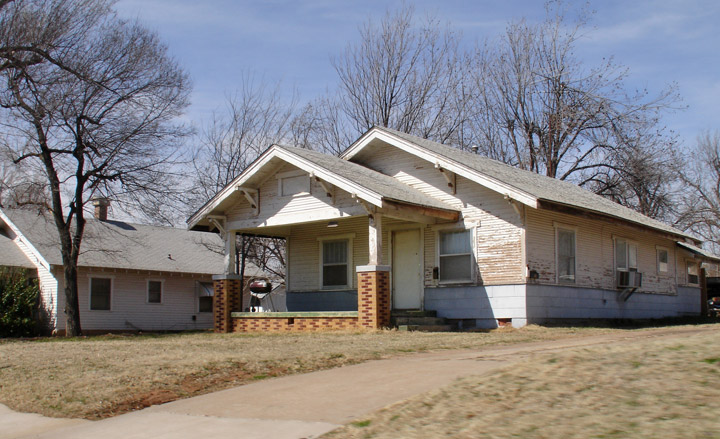
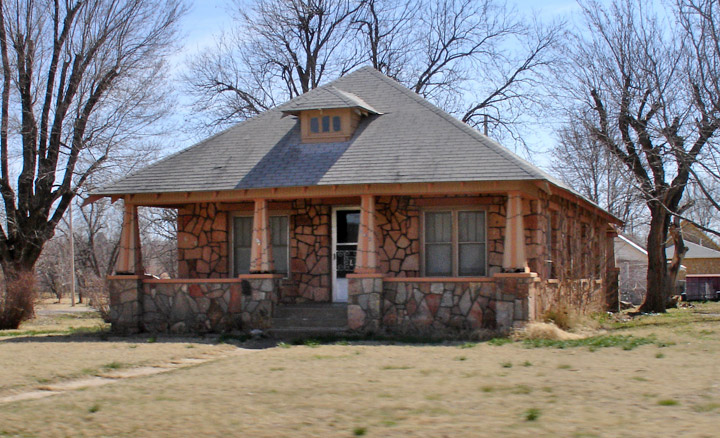

note the tornado shelter at the side of the house